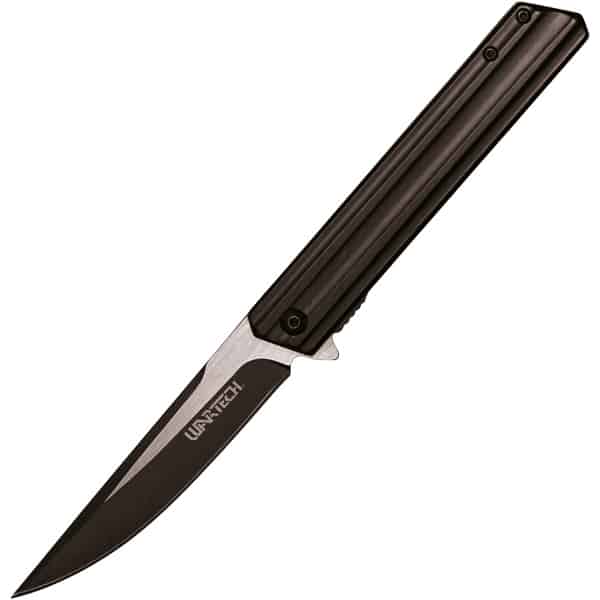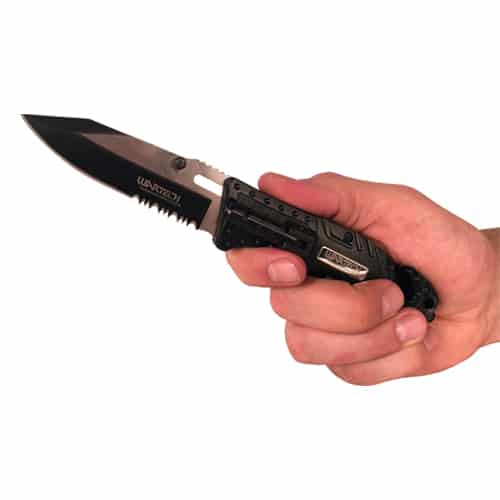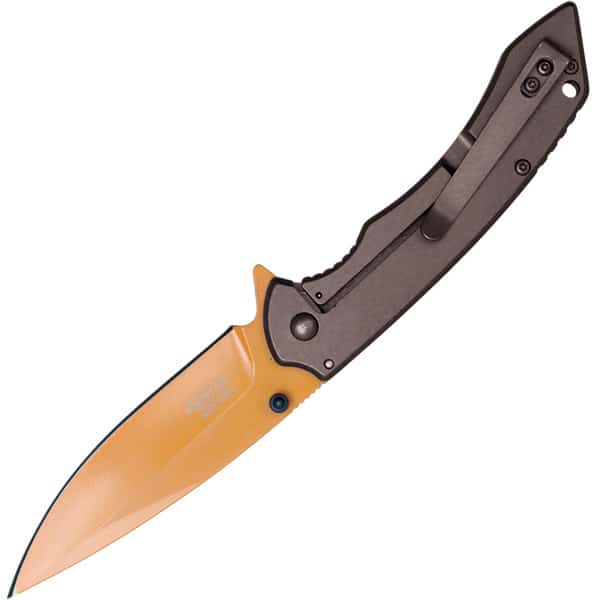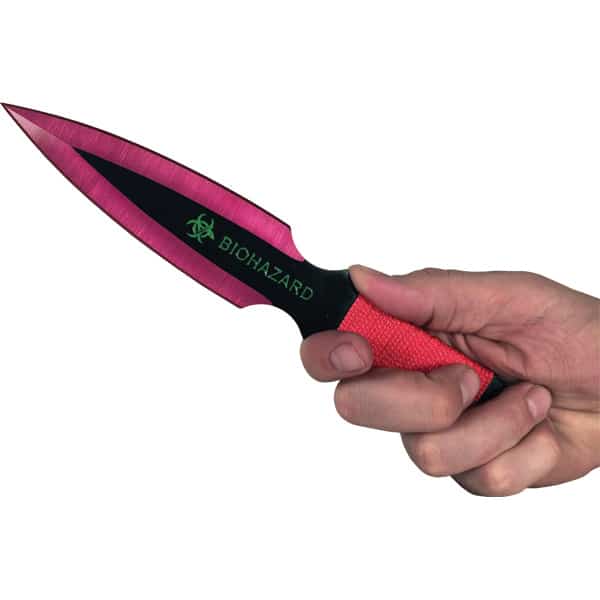
Brainstorm Security Shop

For Orders Over $199

On Any Of Our Products

Details On Refund Page
When you’re in the market for a new set of knives, you’ll find that the blade material significantly impacts both performance and longevity. Whether you’re considering the rust-resistant virtues of stainless steel or the rugged sharpness of carbon steel, the choice isn’t just about aesthetics; it’s about matching the right tool to your culinary needs and maintenance preferences. But beyond the material, have you thought about the construction of the knife itself? Let’s explore what really sets apart a high-quality knife from the rest, and why it might be time to reassess what’s in your drawer.
Choosing the right blade material is crucial for ensuring your quality knives performs well and lasts long. You’ve got to consider what you’ll mainly use the knife for, as different materials cater to different needs.
If you’re into cooking, you might lean towards stainless steel blades. They’re rust-resistant and maintain a sharp edge with minimal upkeep.
However, if you’re more into outdoor activities like camping or fishing, you might prefer a carbon steel blade. It’s tougher and holds an edge longer under rough use, although it requires more care to prevent rust.
Then there’s ceramic, which stays sharp for ages but can be brittle and prone to chipping. It’s perfect if you dislike frequent sharpening but not ideal for heavy-duty tasks.
Another option is Damascus steel, known not just for its strength and durability but also for its striking patterns. It’s a bit of a splurge but well worth it for both performance and aesthetics.
Beyond selecting the ideal blade material, it’s essential to consider how a knife is constructed to ensure its durability and balance. You’ll want to understand the terms ‘full tang,’ ‘half tang,’ and ‘rat-tail tang,’ which refer to how the blade’s metal extends into the knife’s handle.
A full tang, where the metal extends all the way to the base of the handle, offers the most stability and longevity. It’s generally the mark of a high-quality knife.
The handle itself matters too. You’ve got options like wood, which is classic and attractive but requires more maintenance to prevent water damage and bacteria growth. Synthetic materials, such as plastic and composites, are easier to care for and can withstand the rigors of a busy kitchen.
The ergonomics of the handle are crucial as well; it should feel comfortable and secure in your hand, reducing the risk of fatigue or slippage during use.
Furthermore, pay attention to the method of securing the blade to the handle. Rivets are commonly used and should be flush with the handle, without any gaps. Screws, although less traditional, allow for easier disassembly and re-tightening. Both methods can be effective, but the overall construction must feel solid and well-balanced in your hand.

You’ll need several essential knives to tackle various tasks in the kitchen efficiently. First up is the chef’s knife, usually about 8 inches long, perfect for your everyday chopping, slicing, and dicing. It’s your go-to tool for most fruits, vegetables, and meats.
Next, consider a paring knife. At about 3-4 inches, this small but mighty knife is ideal for peeling, trimming, and other precision jobs.
Don’t overlook a serrated bread knife. Its saw-like blade cuts through bread like butter, without squashing your loaf. It’s also useful for delicate foods like tomatoes.
For meat lovers, a carving knife is a must. It’s designed to slice thin cuts of meat, making it perfect for roasts and poultry.
Lastly, a utility knife fills any gaps between your chef’s and paring knives. It’s versatile enough for medium-sized tasks and can handle jobs like slicing cheese or cutting sandwiches.
Each knife has a distinct role, ensuring you’re equipped for any meal prep situation.
Now that we’ve identified the types of knives every kitchen needs, let’s discuss how to assess their quality.
When you’re picking out knives, start by feeling the weight. A good knife should feel solid but balanced in your hand. It shouldn’t feel too heavy or too light; you want it to feel like an extension of your arm.
Next, check the blade. High-quality knives usually have blades that are made from high-carbon stainless steel or ceramic, which hold an edge longer and resist rust and corrosion. The blade should be smoothly attached to the handle with no gaps. Gaps can trap food particles and lead to bacteria growth.
Take a look at the handle too. It should be comfortable to hold, not slippery, and ergonomically designed to prevent fatigue during extended use. The material matters as well—look for durable materials like wood, composite, or metal.
To keep your knives in top condition, it’s essential to clean and store them properly. After each use, you should wash your knives by hand with warm water and a mild detergent. Avoid tossing them in the dishwasher as the harsh chemicals and intense heat can damage the blade’s material and dull its edge. Instead, carefully wash the blade and handle, then dry immediately with a soft towel to prevent any water spots or rusting.

Storing your knives is just as crucial as cleaning them. Don’t throw them in a drawer where they can get bumped and scratched. A knife block or magnetic strip is ideal for keeping your blades sharp and in good shape. These storage methods also ensure that you’re safely handling the knives, reducing the risk of accidents.
You’ll also want to hone your knives regularly to maintain their sharpness. Using a honing rod before each use helps realign the blade’s edge, keeping it sharp and efficient. Remember, a sharp knife is safer than a dull one, as it requires less force to cut through food, decreasing the chance of slipping and cutting yourself.
The knife industry’s continual advancements in technology and materials have significantly enhanced the quality and performance of modern, durable blades. As you explore the latest innovations, you’ll find that manufacturers are integrating exotic, high-performance alloys and employing precision laser cutting techniques. These methods ensure that each knife is both incredibly sharp and remarkably durable.
You’ve probably noticed knives that boast of cryogenic treatment in their production process. This cutting-edge technique involves cooling the steel to extremely low temperatures, which realigns its molecular structure. What does this mean for you? A blade that holds its edge longer and resists wear remarkably well, making your chopping and slicing tasks smoother and more efficient.
Furthermore, the adoption of 3D printing technology has revolutionized handle design, allowing for ergonomic grips that fit your hand perfectly. This not only enhances comfort but also improves control while you’re using the knife, ensuring that each cut is precise and effortless.
In your quest for the perfect knife, keep an eye out for these innovations. They’re not just marketing buzzwords but are backed by science to provide you with a cutting experience that’s a cut above the rest. Embrace these advancements and you’ll find the art of cooking transformed by a simple yet sophisticated tool.

Always handle knives with care to ensure your safety and maintain the blade’s integrity. When you’re using a knife, make sure you’ve got a good grip. Hold the handle firmly, not the blade. It’s tempting to grab the blade when you’re trying to control a difficult cut, but that’s a quick route to injury.
Keep your knives sharp; a dull blade can be more dangerous than a sharp one. You’ll have to apply more pressure to cut with a dull blade, which increases the risk of the knife slipping. It’s worth investing in a good sharpener or taking your knives to a professional to maintain their edges.
Always cut away from your body. It might seem like common sense, but in the haste of chopping, it’s easy to forget. If the knife slips, you don’t want the blade coming towards you.
Use a cutting board, not your hand or any unstable surface. A stable base ensures control and helps prevent accidents.
When you’re done, wash your knives by hand. The dishwasher can dull knife blades and cause wooden handles to warp. Store them in a knife block or on a magnetic strip, never loose in a drawer.
Choosing the right knife for different foods can enhance your culinary experience and ensure efficiency in the kitchen.
When you’re slicing bread, you’ll want a serrated knife. Its saw-like edge cuts through crust without squashing the bread.
For meats, a chef’s knife is indispensable. It’s versatile enough to slice, dice, and mince, making your prep work a breeze.
For delicate tasks, like peeling fruits or deveining shrimp, a paring knife will be your best friend. Its small blade offers superior control for precise cuts.
Don’t forget about a cleaver when dealing with tougher jobs like breaking down chicken or chopping hard vegetables. Its hefty weight does most of the work for you.
You might also consider investing in a fillet knife for fish. Its flexible blade curves easily, allowing you to glide along the backbone and under the skin effortlessly. This specificity prevents wastage and maintains the fish’s delicate texture.
So, you’ve got the rundown on the importance of choosing the right knife. Remember, selecting a knife with the appropriate blade material and construction enhances your culinary experience.
Keep your knives sharp and well-maintained, and they’ll serve you well in preparing countless meals. Whether slicing, dicing, or chopping, the perfect knife is key to kitchen efficiency and safety.
Invest wisely in high-quality knives, and enjoy the precision and reliability they bring to your cooking adventures.

Brainstorm Security Shop
1867 Caravan Trail
Ste 105
Jacksonville, FL 32216
Call us toll free: (800) 859-5566